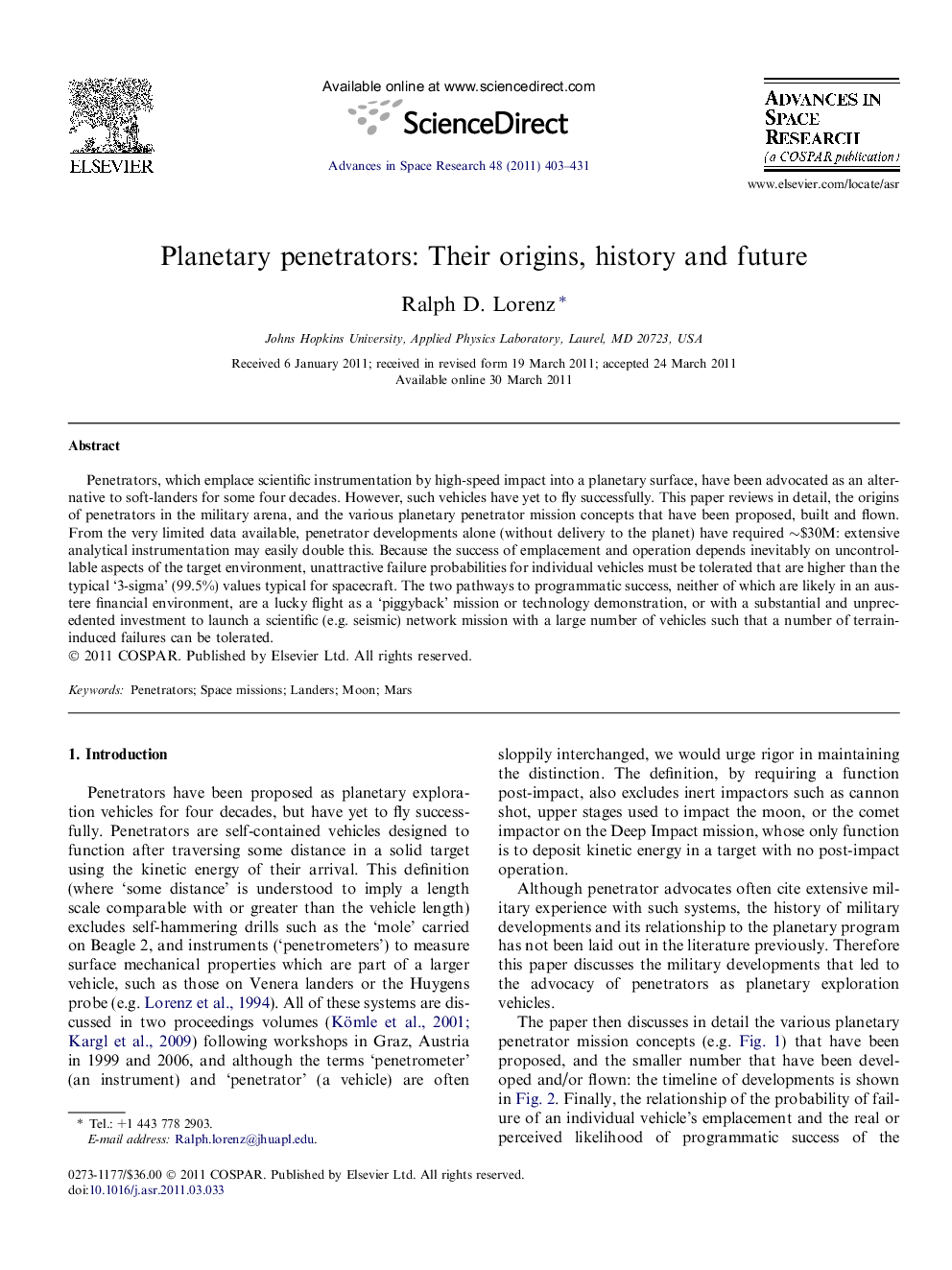| Article ID | Journal | Published Year | Pages | File Type |
|---|---|---|---|---|
| 1766479 | Advances in Space Research | 2011 | 29 Pages |
Abstract
Penetrators, which emplace scientific instrumentation by high-speed impact into a planetary surface, have been advocated as an alternative to soft-landers for some four decades. However, such vehicles have yet to fly successfully. This paper reviews in detail, the origins of penetrators in the military arena, and the various planetary penetrator mission concepts that have been proposed, built and flown. From the very limited data available, penetrator developments alone (without delivery to the planet) have required â¼$30M: extensive analytical instrumentation may easily double this. Because the success of emplacement and operation depends inevitably on uncontrollable aspects of the target environment, unattractive failure probabilities for individual vehicles must be tolerated that are higher than the typical '3-sigma' (99.5%) values typical for spacecraft. The two pathways to programmatic success, neither of which are likely in an austere financial environment, are a lucky flight as a 'piggyback' mission or technology demonstration, or with a substantial and unprecedented investment to launch a scientific (e.g. seismic) network mission with a large number of vehicles such that a number of terrain-induced failures can be tolerated.
Keywords
Related Topics
Physical Sciences and Engineering
Earth and Planetary Sciences
Space and Planetary Science
Authors
Ralph D. Lorenz,
